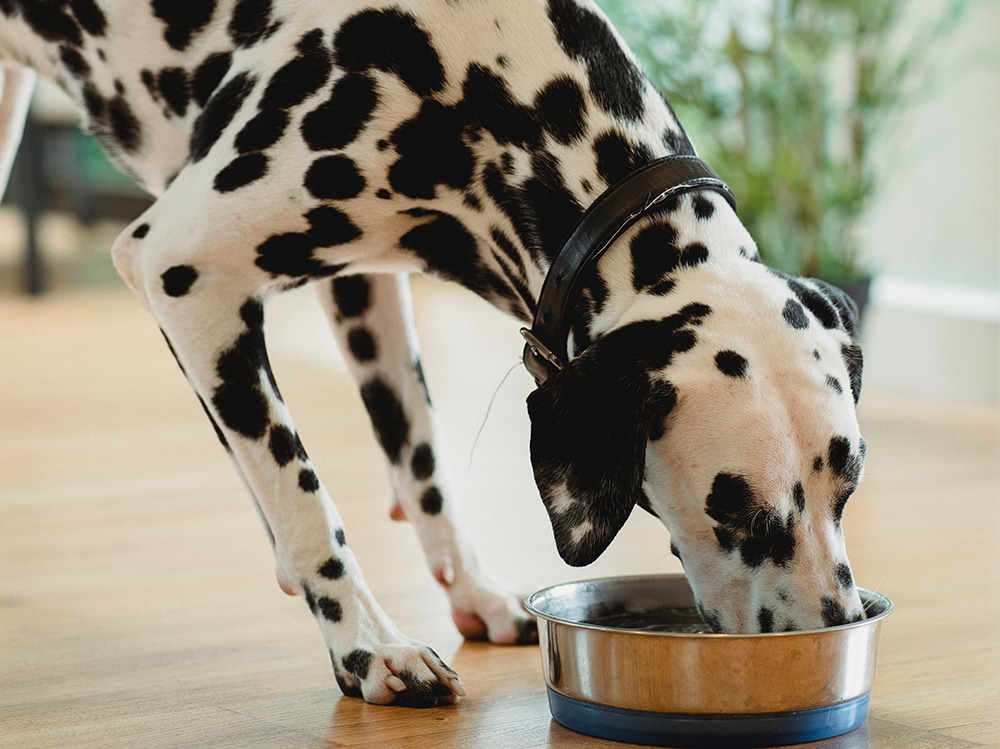Dog and cat dehydration is a common and serious health concern. This blog lists the signs of pet dehydration, the causes of pet dehydration, what to do when your pet is dehydrated and how to prevent dehydration in your animal is an important part of being a responsible pet owner.
What is Dehydration?
Dehydration is when an animal loses more water than they are taking in and their body does not have enough fluids to carry out their normal bodily functions. When the fluids are not replaced, the animal becomes dehydrated.
The Importance of Pet Hydration
Pets need water to move important nutrients in and out of the cells of the body, assist in the digestive tract and to help absorb nutrients. Water in the body cushions the brain and spinal cord, lubricates joints, regulates body temperature and improves cognitive function. A lack of water puts all of these functions at risk.
Dogs should drink one ounce or one-eighth cup of water per pound of body weight every day. Cats should drink four ounces or about one half cup of water per every five pounds of body weight per day.
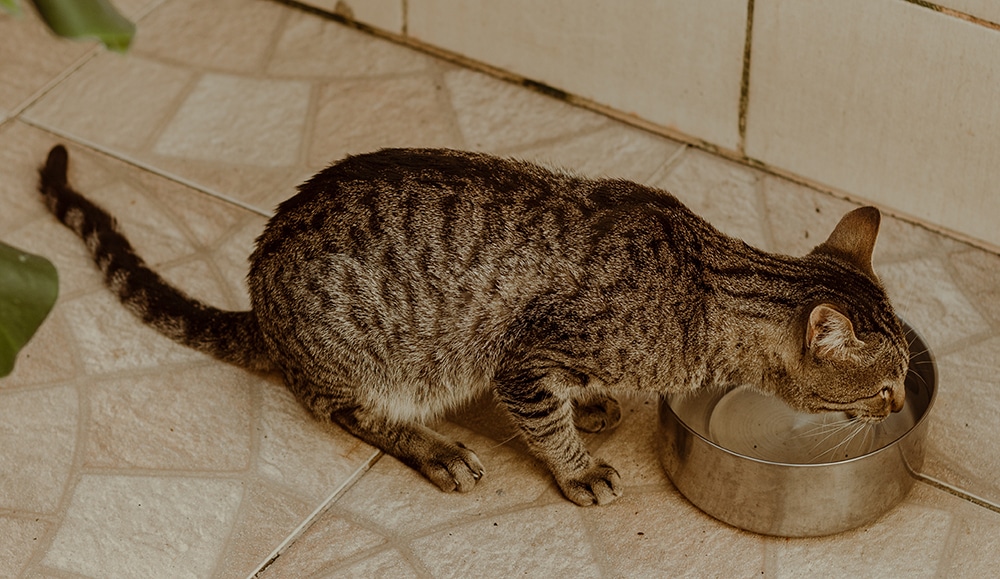
The Signs of Dog and Cat Dehydration
Cats can survive without water for about three to four days. Dogs can go without drinking water for about 72 hours or three days. Both animals show signs of dehydration within the first 24 hours of not drinking water.
There are many signs of dehydration in both cats and dogs. Cats show signs of lethargy, poor appetite, sunken eyes, weakness and dry mucous membranes. Dogs show signs of loss of skin elasticity, vomiting with or without diarrhea, sunken eyes, dry nose, shock, dry looking eyes, thick saliva, collapse and dry, sticky gums.
If left untreated, severe dehydration in cats can lead to organ failure, seizures and death. In dogs it can lead to kidney failure, loss of consciousness and death.
The Causes of Dog and Cat Dehydration
Common causes of dehydration in dogs are heatstroke, fever, liver or kidney disease, hormonal conditions like diabetes mellitus, insufficient fluid intake, vomiting, diarrhea, overheating or illness.
Most common causes in cats are chronic kidney disease, heatstroke, lack of water intake, diabetes, diarrhea, vomiting, overheating and hyperthyroidism.
What To Do When Your Pet is Dehydrated
Vet Visit
A pet that displays many symptoms of dehydration needs to be brought immediately to the vet. The animal doctor knows the pet’s medical history and may suggest an IV drip to make sure the cat or dog gets as many fluids as quickly as possible. Tests may be arranged to see if there are any underlying problems that caused the dehydration or instruction given to ensure a quick recovery at home.
Home Remedies for Pet Dehydration
Minor dehydration can be treated at home with home remedies. Fill up your pet’s water bowl with fresh, cool water and make sure they have easy access to drink. The cat or dog may reject the water. If that happens, then make the water more appetizing by adding a small amount of chicken broth or tuna juice. The smell and flavor draws in animals more than regular plain water.
Offer your pet water in small amounts to prevent them from taking in too much water too fast. A rush of water into their stomachs can cause them to vomit, which leads to more dehydration. Instead, give only a little bit of water every few minutes.
Give an ice cube or two to your pet to encourage water intake. Many dogs and cats enjoy the crunch of ice cubes and view the frozen water as a treat. Allow them to lick or eat the ice cubes one at a time.
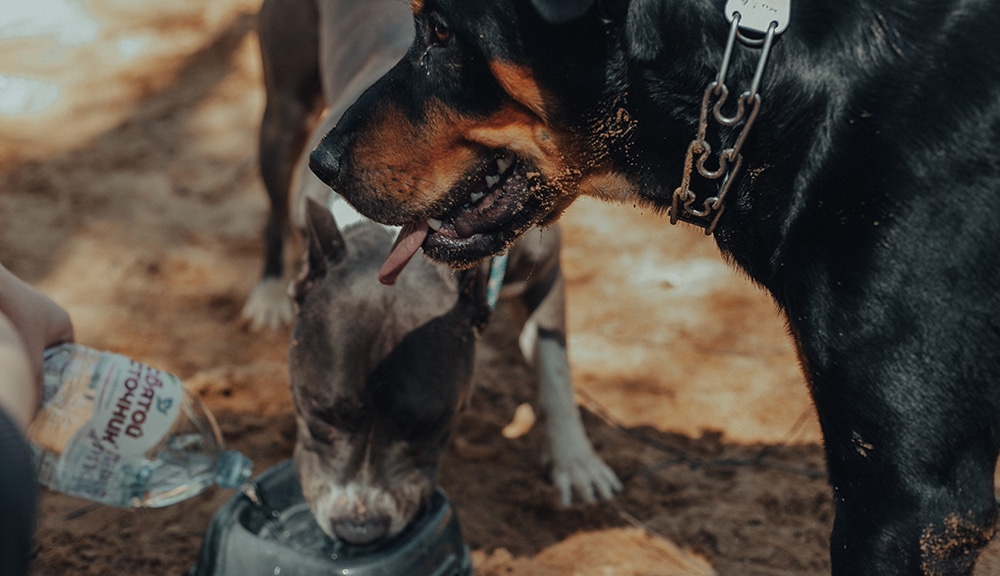
Pedialyte for Dogs and Cats
Do not give Pedialyte or any other human hydration cures to your pet. An animal’s electrolyte makeup is different from humans. The sodium levels in human hydration cures are too high for a cat or dog and drinking these fluids can cause many other problems. To learn more read this blog.
How To Prevent Pet Dehydration
Pet Water Bowls
Water should be available to your pet at all times. Wash their bowl and refill with fresh, cool water daily. Bacteria can build up in a dog or cat bowl and that can put off your pet from sipping water. If your household animal enjoys being outside and inside, then have indoor and outdoor water bowls to increase their accessibility to water at all times.
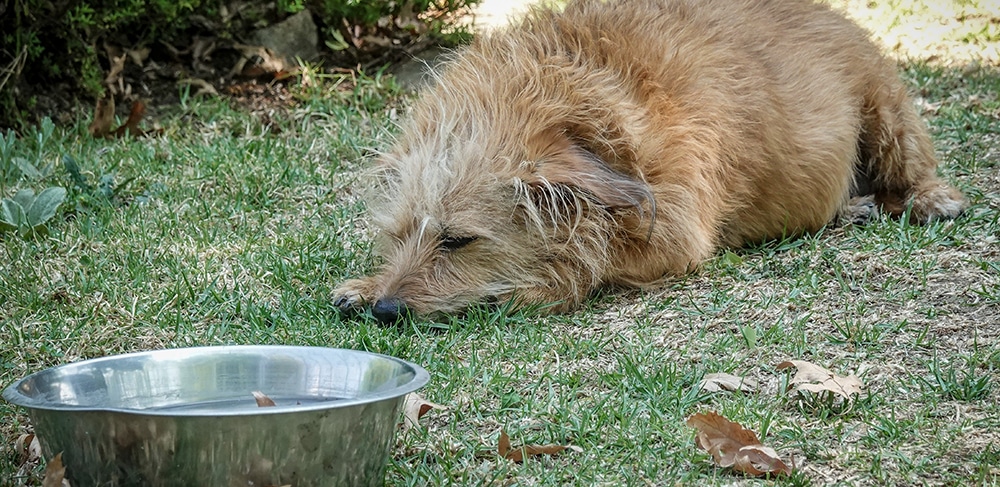
Pet Drinking Fountain
Stationary water can be boring to pets, especially cats. Consider purchasing a pet drinking fountain. The running water encourages an increase of daily water intake for cats and dogs.
Wet Dog and Cat Food
Wet pet food has a higher moisture content than dry kibble. A pet who shies away from drinking water would benefit from a wet pet food diet to help decrease the amount of water they would need to drink daily. Another good idea is to add a bit of water to your pet’s kibble.
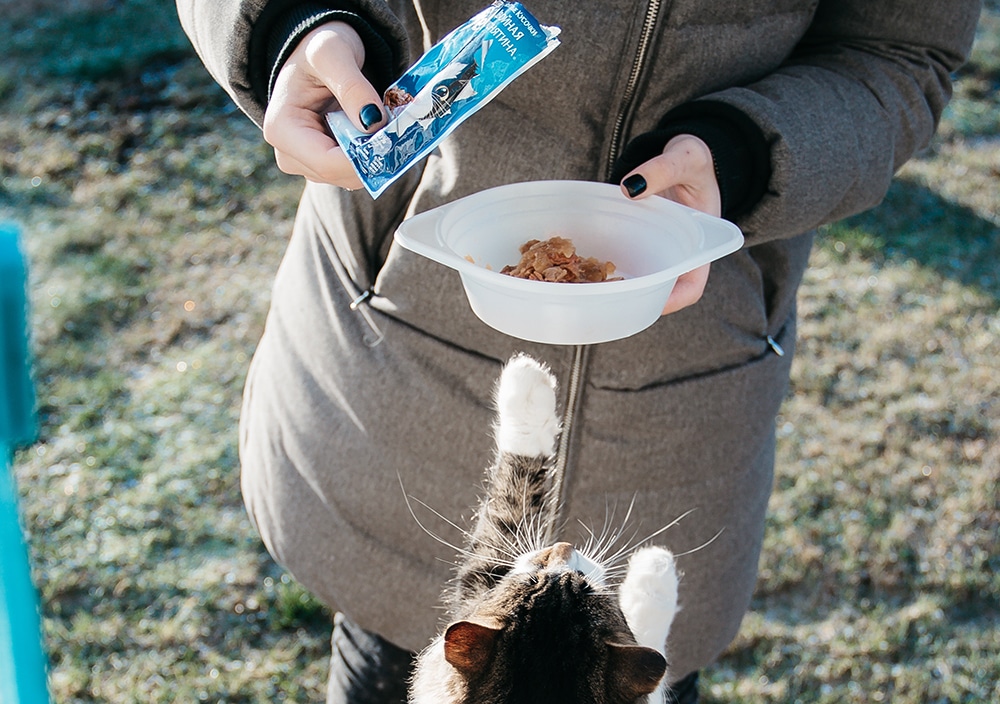
Bring Water for Pets on Trips and Outings
Always bring a portable bowl and a bottle of water for your pet on any road trips, prolonged outings, hikes or high-energy outings. Pay attention to how often and how much your pet is drinking water throughout the trip and outing.
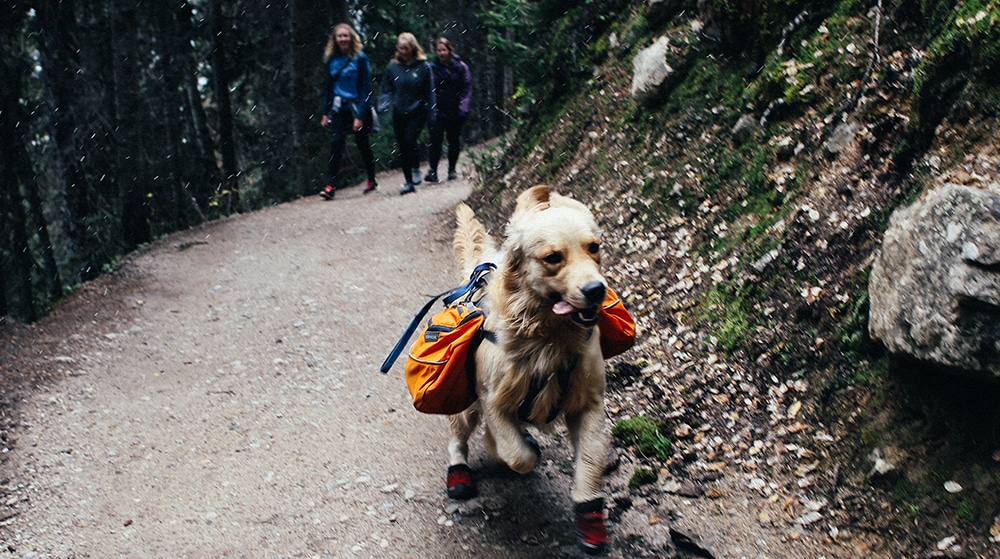
Pet Exercise at Cool Times of Day
Oftentimes, dehydration is caused by a pet overheating. Reduce this risk by exercising your pet outdoors at cooler times of the day. Early mornings and late evenings are ideal times to be outside during the hot months of the year. Read here to learn more ways of how you can keep your pets cool in the hot summer months.
Water Equals Life
Water is vital to an animal’s daily bodily functions and overall health. Low or no water intake can have a strong negative affect on your pet’s life. Prioritize their daily fluid consumption by actively preventing water deficiency and understanding the signs and causes of pet dehydration.


